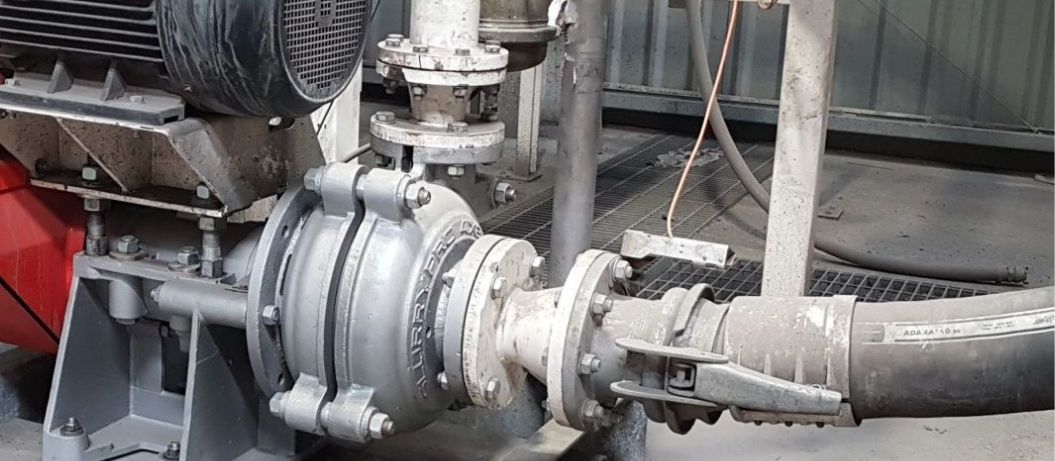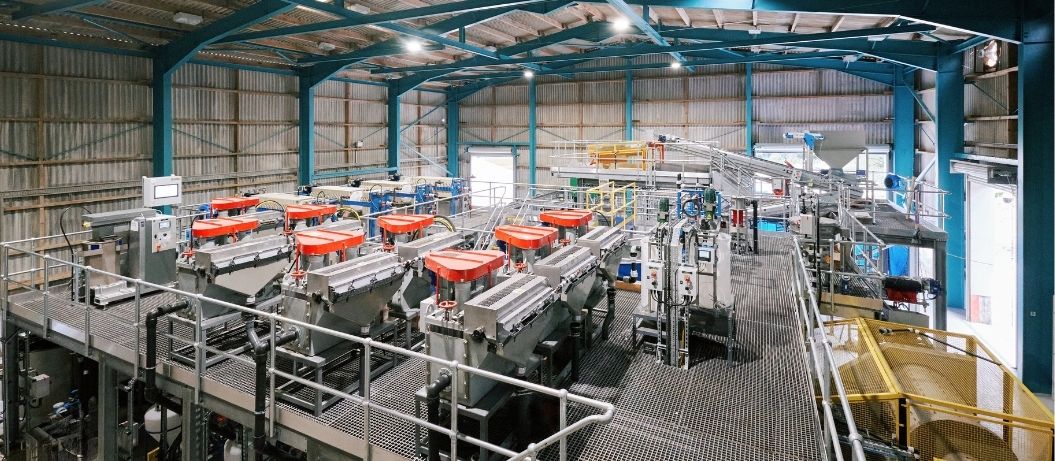As a quarry manager, one of the most important components of your washplant is the slurry pump system.
“Many standard pumps are fine for moving rain/clear flood water but for slurry pumps, life isn’t so smooth.”
So, what to be aware of when choosing a pump for slurry handling? There are many factors that good slurry pump manufacturers need to bear in mind in the design and specification. Being aware of these will enable you to choose the correct pump for your quarry sludge transfer pumping.
What Specific Design Features Do Industrial Slurry Pumps Need?
Sludge from quarrying or post-washplant carries solids such as sand or other minerals, often of a wide range of unpredictable particle size and type. Some of these are very abrasive and can quickly wear down vital parts resulting in a shortened pump life, reduced performance, or costly breakdown.
Important features quarry managers look out for when buying a slurry pump:
Longevity of Materials. Quality slurry pumps are built with abrasive resistant parts and internal linings such as specially formulated rubbers and high-chrome alloys.
Viscosity and Particle Size Range. Over time and season, your slurry composition is likely to vary so the pump needs to handle a sensible range. Impeller blades in slurry pumps are generally larger than general-purpose pumps to enable them to pass larger solids and must be designed to retain good pressure head results.
Ease of Maintenance. Wearing parts need to be quickly accessed for inspection and replacement when needed, with minimal downtime. A split-case pump design makes it quick and cost-effective to replace worn parts without replacing the whole pump.
Correct levels of lubrication must be maintained to ensure continued performance, safety, and efficiency of mechanical parts. Pumps with an auto-greasing system save time and ensure that this task is done consistently.
Size and Power of Pump. This is determined largely by the volume and transfer distance. Slurry pumps typically have a flatter head curve to aid the movement of thicker solution over the entire length of the discharge pipe.
Balancing energy usage with reliable capacity is becoming more critical. Over-spec can lead to significant profit revenue losses and unnecessary climate impact whilst going cheap risks having to buy again or repair too soon. Ask Atlantic Pumps for help calculating the power necessary for your particular flow and head requirements.
Parts and Service Availability. Always check the brand’s parts availability/servicing requirements and look out for pump units that can be opened up to access the areas taking the brunt of wear and tear. You need to keep production going at all times. Atlantic Pumps understand this importance so carry good stocks of spare parts, backed up by extensive UK-wide coverage of specialist quarry pump engineers.
How Much Leakage Is Acceptable?
The shaft entrance into the impeller chamber is where leakage is most likely to occur on any centrifugal pump. Whether this is of concern depends on the slurry being handled.
The most basic seal (and lowest cost from the manufacturer’s side) is a flexible and absorbent rope-like sealant, called a gland seal. The tighter the packing, the less leakage but also more resistance is created. To keep these opposing attributes balanced over time, regular re-packing of gland seals is necessary.
An improvement on this is an expeller seal which uses the spinning shaft to reduce the pressure at its entrance; this works well when the pump is in full operation albeit with a slight increase in resistance.
By far the best performing seal, which has the lowest lifetime running cost is the mechanical seal. SlurryPro Mechanical Seals are a two-part, precision-made mechanism with a micron lubricating gap between stationary and rotating parts. For more information on pump seals see https://atlanticpumps.co.uk/blogs/news/sealing-systems-for-centrifugal-slurry-pumps
Which Pump Type Is Best For Slurry?
Slurry pumps typically have a flatter head curve compared to general-purpose pumps to the aid transfer of thick slurry over further distance.
One of the most common types of pump used for slurry is a centrifugal action one. The simple concept of a centrifugal pump gives pump manufacturers more scope to match the capacity and flow rate to the target need. Optimum efficiency and performance can be achieved through impellor design and size of inlet and outlet. By using larger impeller vanes, these pumps can be made to pass larger solids with ease whilst still achieving the required head.
Centrifugal pumps take up less floor space than an equivalent reciprocal pump, with obvious advantages for site operations and logistics.
Horizontal Pump or Vertical?
Vertical pumps are good where they need to sit over a sump whereas horizontal pumps are best where the performance of flow and head are most important, making them the most common solution for quarries and other sites with bulk slurry handling needs.
Another type of pump that may suit particular slurry transfer needs is a peristaltic pump. As the pumped fluid does not come into direct contact with the pump’s mechanics, industrial peristaltic pumps are good for corrosive or difficult-to-clean slurry.
For more information on selecting the perfect slurry pump for your quarry, visit www.atlanticpumps.co.uk today.
We also take a sustainable approach to our work and are committed to reducing energy waste from pumps. Our expert knowledge allows us to reduce energy usage by 20% on the average site!
Call us today on 0808 196 5108 for more information.
 June 17 2022
June 17 2022 4 Minutes min read
4 Minutes min read


